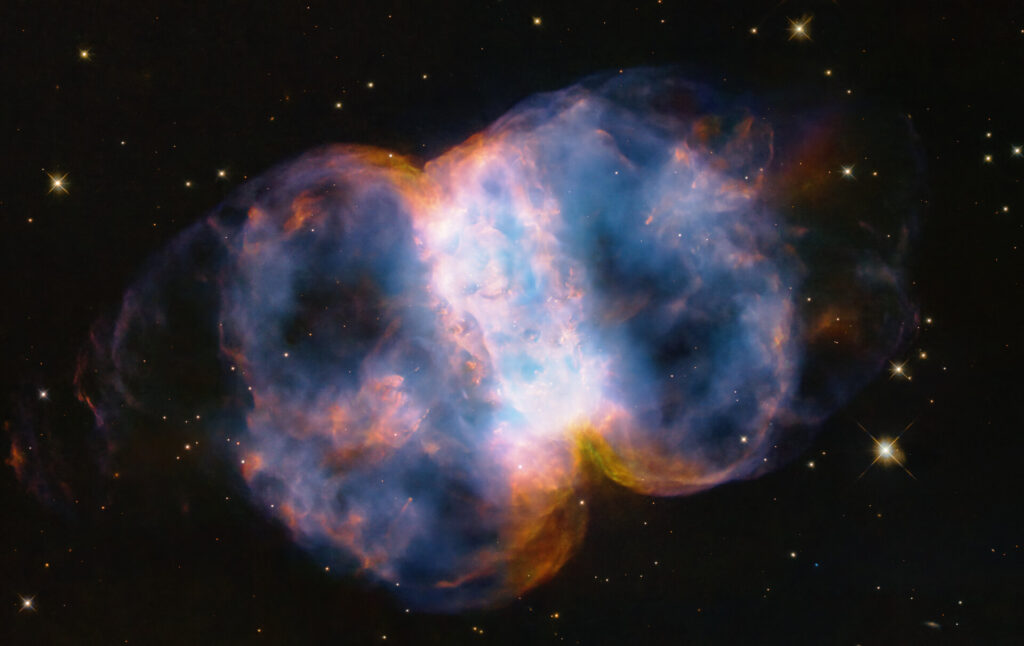On April 24, the Hubble telescope celebrated its 34th birthday. In honor of this event, the mission support team posted a picture showing the M76 nebula, also known as the Little Dumbbell Nebula.

The nebula photographed by Hubble is located at a distance of 3,400 light-years from Earth in the direction of the constellation Perseus. It is very popular with amateur astronomers. And if you look at the picture, it becomes clear why. The nebula is characterized by photogenicity and a remarkable shape, to which it owes its nickname.
M76 is classified as a planetary nebula. It is an expanding shell of incandescent gases ejected by a dying star that once resembled the Sun. The radiation from its exposed core ionizes matter, causing it to glow (red corresponds to nitrogen, blue to oxygen), making M76 visible to telescopes.
The nebula consists of a thick disk of gas and dust in the center, and two parts on either side of it. They are streams of gas moving along the axis of rotation of a dying star at a speed of 890 km/s. They encounter a colder substance that was ejected earlier.
As for the central structure, astronomers assume that it was formed under the influence of the gravity of the companion star. However, this hypothetical luminary is not visible in the Hubble image. Perhaps it was absorbed by the central star when it turned into a red giant. A chemical analysis of the disk could confirm or deny the fact of such stellar cannibalism.
A dot can also be seen in the center of the nebula. This is the exposed core of a dying star, which is shrinking, turning into a white dwarf. Its surface temperature is 120 thousand degrees Celsius, which is 24 times higher than the surface temperature of our Sun.
By cosmic standards, the stage of a planetary nebula is extremely fleeting. In just 15 thousand years, the stellar core will cease to ionize the surrounding matter, after which M76 will cease to be visible.
According to https://www.esa.int
Follow us on Twitter to get the most interesting space news in time
https://twitter.com/ust_magazine


